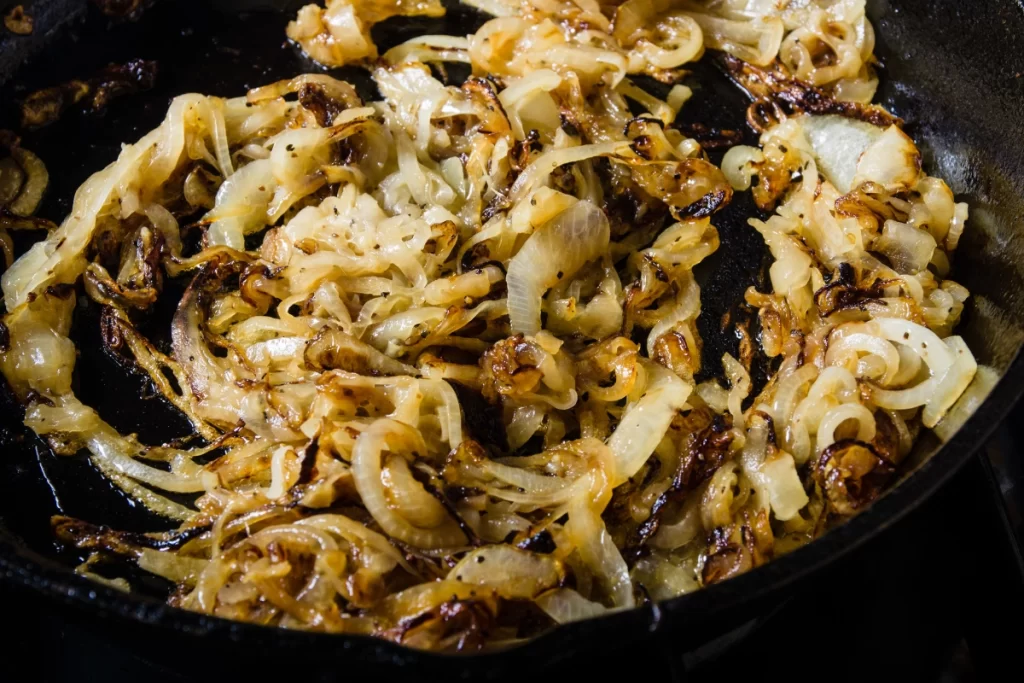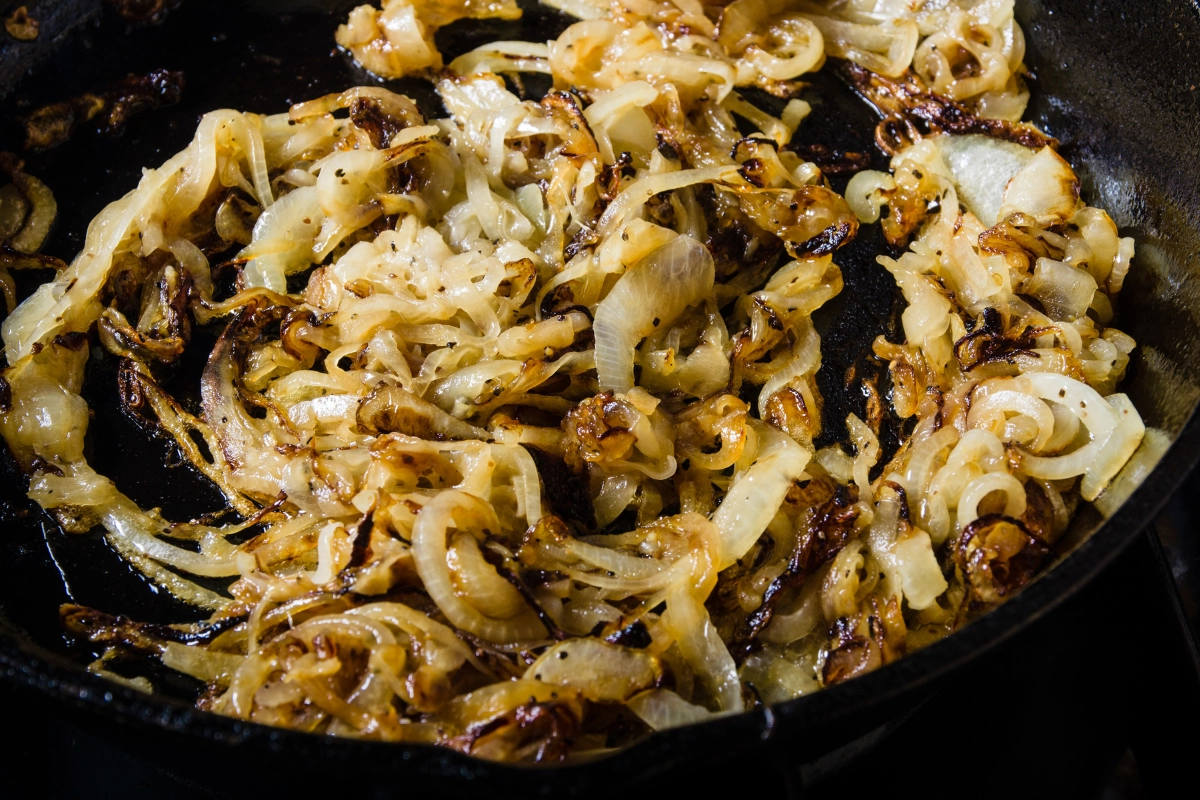How to Get Perfectly Caramelized Onions Every Time!
Onions have been a staple in cuisines around the world for thousands of years, with evidence of their cultivation dating back to 5000 BCE in China. This humble yet versatile vegetable belongs to the Allium family, alongside garlic, leeks, and chives. While raw onions are known for their pungent flavor and tear-inducing properties, the process of caramelization transforms them into a sweet, complex delicacy that elevates countless dishes.
Caramelization is a type of non-enzymatic browning that occurs when sugars are heated to temperatures of 300°F (149°C) or higher. In onions, this process breaks down the natural sugars and amino acids, creating hundreds of different flavor compounds. The result is a rich, nutty, and intensely sweet flavor profile that bears little resemblance to the sharp, sulfurous taste of raw onions

Perfectly Caramelized Onions Every Time, How To
Caramelized onions are a culinary treasure, adding deep, sweet flavor to countless dishes. Here’s how to achieve onion perfection:
1. Slice onions evenly, about 1/8 inch thick.
2. Use a heavy-bottomed pan on medium-low heat.
3. Add a mixture of butter and oil to prevent burning.
4. Cook slowly, stirring occasionally, for 45-60 minutes.
5. Add a pinch of salt to draw out moisture.
6. Deglaze the pan with water or wine if the onions start sticking.
Unique Recipe Suggestions
1. Caramelized Onion and Blue Cheese Tart: Layer caramelized onions with crumbled blue cheese in a buttery pastry shell.
2. Onion Jam: Cook caramelized onions with balsamic vinegar and brown sugar until thick and jammy. Spread on sandwiches or serve with cheese.
3. French Onion Mashed Potatoes: Fold caramelized onions into creamy mashed potatoes and top with Gruyère cheese.
4. Caramelized Onion Hummus: Blend caramelized onions into your favorite hummus recipe for a sweet and savory twist.
5. Onion-Infused Vodka: Steep caramelized onions in vodka for a unique cocktail base.
Storing Onions
Different onion varieties have varying storage needs:
1. Yellow and Red Onions: Store in a cool, dry, dark place with good air circulation. A mesh bag or basket works well. Properly stored, they can last 2-3 months.
2. Sweet Onions (e.g., Vidalia, Walla Walla): More perishable due to higher water content. Store in the refrigerator, wrapped in paper towels, for up to 2 weeks.
3. White Onions: Similar to yellow onions, but with a shorter shelf life. Store in a cool, dry place for up to 1 month.
4. Shallots: Store like yellow onions, in a cool, dry place. They can last up to a month.
5. Green Onions/Scallions: Wrap roots in a damp paper towel and store in a plastic bag in the refrigerator. Use within a week.
6. Pearl Onions: Store in a cool, dry place for up to 2 weeks, or in the refrigerator for up to a month.
Tips
- Don’t store onions near potatoes, as they release gases that can cause each other to spoil faster.
- Cut onions can be stored in an airtight container in the refrigerator for 3-5 days.
- For long-term storage, consider freezing caramelized onions in small portions for easy use.
By following these tips and exploring different onion varieties, you’ll always have the perfect ingredient on hand for your culinary creations.
Health Benefits of Onions
Onions aren’t just flavorful; they’re also packed with nutrients and beneficial compounds:
Rich in Antioxidants: Onions contain quercetin, a powerful antioxidant that may help reduce the risk of heart disease and certain cancers.
Anti-Inflammatory Properties: The sulfur compounds in onions have anti-inflammatory effects, which may help in managing chronic conditions like arthritis.
Heart Health: Regular consumption of onions has been linked to lower blood pressure and reduced risk of blood clots.
Blood Sugar Regulation: Some studies suggest that onions may help control blood sugar levels, which is beneficial for people with diabetes.
Bone Health: The compound GPCS found in onions may help prevent bone deterioration.
Antibacterial Properties: Onions have natural antibacterial qualities that can help fight potential pathogens in the body.
While caramelizing onions does reduce some of their raw nutritional value due to heat exposure, many beneficial compounds remain intact, and the process makes the onions easier to digest for some people.
In Conclusion, Perfectly Caramelized Onions Every Time
Mastering the art of caramelized onions opens up a world of culinary possibilities. From enhancing everyday dishes to creating gourmet delicacies, these sweet, golden strands of flavor are a testament to the transformative power of cooking. By understanding the science behind caramelization, exploring various onion varieties, and employing proper storage techniques, you can ensure that you always have this versatile ingredient at your fingertips.
Moreover, incorporating onions into your diet, whether raw, cooked, or caramelized, can contribute to a healthier lifestyle. Their unique combination of flavor-enhancing abilities and health-promoting compounds makes onions a true superfood in the culinary world.
As you experiment with different onion varieties and caramelization techniques, remember that patience is key. The slow, careful process of caramelizing onions is a reminder that sometimes, the best things in cooking – and in life – are worth waiting for. So the next time you find yourself with a surplus of onions, consider transforming them into a sweet, golden treasure that will elevate your cooking and possibly your health.
Check out this recipe using onions here!

Join us on Facebook at Sherry Kay Cooks!
